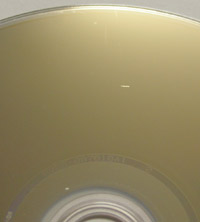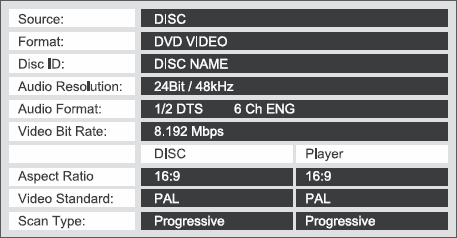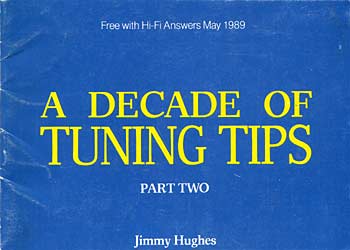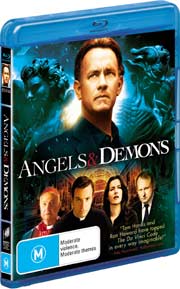 Early this year I foolishly purchased a Blu-ray disc from one of those shops that insist on opening the sealed cases. It wasn’t until a couple of weeks ago that I got around to doing anything with the disc, and what I did do was scan it with BDInfo to gather information for my Blu-ray database. (Yes, I do also watch movies as well! But often the scan comes first.)
Early this year I foolishly purchased a Blu-ray disc from one of those shops that insist on opening the sealed cases. It wasn’t until a couple of weeks ago that I got around to doing anything with the disc, and what I did do was scan it with BDInfo to gather information for my Blu-ray database. (Yes, I do also watch movies as well! But often the scan comes first.)
The scanning went swimmingly until about 51 minutes into the disc. At that point, BDInfo informed me that the disc was unreadable. I examined the disc and, yes, there it was. Can you see it in the photo? A scratch! About 1.5 millimetres of nastiness.
Not just a scratch, but the worst possible kind for a digital media disc: it was at a tangent to a circle concentric to the disc, rather than radial to it. That means that it essentially obscured a sequence of data over a significant length. A radial scratch (ie. radiating from the centre outwards) obscures just as much data, but only a small amount at each point as it crosses the ‘tracks’. The error correction is generally able to reconstruct the original signal in that case.
But a tangential scratch: if it cannot be read around or through somehow by the laser mechanism, then one this length means too much data is lost for repair.
I was torn. Should I take the disc back or keep it? I put it into a player I had handy, and it made the player stutter and skip until it had gotten past that point. That sealed it: I decided I’d better keep the disc. Clearly, it was an ideal test disc.
Thanks to Warner Bros for sending me a shiny new one to replace the damaged one for its original purpose: data gathering and enjoyment.
Anyway, since this valuable new test has now come into my hands, I have started to use it. Here are my notes for the first two players (no brand names since my reviews haven’t been completed) I tried it on:
Looped around 51:30 for some seconds, then got back to normal after jumping to 51:47.Paused at 51:02, then skipped to 51:15, then froze at 51:28. Would not skip or ff out of this. Had to stop disc.
The first player was less expensive than the second.
The third player I tried it on was the Oppo BDP-83, which I have on long term loan courtesy of the manufacturer and the Australian distributor. Here’s my note:
Played perfectly 3 out of 4 times. 1 out of 4: a tiny stutter at ~51:40.
Who would have thought that a player could make so much difference?

 Years ago I purchased a Harman Kardon DVD-30 DVD player, primarily for its decent DVD performance combined with DVD Audio playback.
Years ago I purchased a Harman Kardon DVD-30 DVD player, primarily for its decent DVD performance combined with DVD Audio playback. I suspect it was English high fidelity magazines from the second half of the 1970s, and especially the 1980s, that most fostered the irrationality which invaded the world of high fidelity sound. By the end of the 1980s this had reached what I hope was its zenith. I think it has receded a little since then, in large part due to home theatre.
I suspect it was English high fidelity magazines from the second half of the 1970s, and especially the 1980s, that most fostered the irrationality which invaded the world of high fidelity sound. By the end of the 1980s this had reached what I hope was its zenith. I think it has receded a little since then, in large part due to home theatre. Read the review to find out all the details.
Read the review to find out all the details. Yesterday I went to Sydney, courtesy of Sony, to see its new line of Blu-ray players and some of the stuff it’s doing with Blu-ray discs.
Yesterday I went to Sydney, courtesy of Sony, to see its new line of Blu-ray players and some of the stuff it’s doing with Blu-ray discs. addition to the persistent storage USB port on the rear, a front panel USB port for photo display. They also support photos from DLNA servers over a home network.
addition to the persistent storage USB port on the rear, a front panel USB port for photo display. They also support photos from DLNA servers over a home network.